December
December 11 – St. Maria Maravillas of Jesus, Virgin | Optional Memorial
María was born in Madrid in 1891. There she entered Carmel on October 12, 1919. In 1924 she founded a Carmel at Cerro de los Angeles, alongside a monument to the Sacred Heart of Jesus. From this foundation followed nine others in Spain and one in India. She always gave first place to prayer and self-sacrifice. She had a true, passionate zeal for the glory of God and the salvation of souls. Even while living a life of poverty in the cloister she helped those who were in need, initiating apostolic, social and charitable works. In a particular way she helped those of her own Order, priests, and other religious congregations. She died in the convent of La Aldehuela, Madrid, on December 11, 1974. She was canonized on May 4, 2003 by Pope John Paul II in Madrid.
December 14 – St. John of the Cross, Our Holy Father, Priest and Doctor of the Church | Solemnity
Juan de Yepes was born into a poor family in Spain in 1542. After the death of his father, he settled with his mother and older brother in a fairly large city, Medina del Campo, when John was about nine. Here John would attend a local boarding school where he was taught to read, write, and serve Mass.
John completed his studies at a Jesuit College when he was 21 years old. Although there were many religious communities in the city, John chose to enter the order of Our Lady and became a Carmelite. He carried out his studies for the priesthood at the distinguished University of Salamanca. At age 25 he was ordained a priest and returned to his hometown to celebrate his first mass.
This visit home would completely change the course of John’s life. Desiring a more solitary and prayerful life, John planned to leave the Carmelites and become a Carthusian. Fatefully, John met Teresa of Avila who convinced him to remain a Carmelite and to help her found a monastery of reformed Carmelite friars. Teresa’s zeal and love of the Lord were contagious, and John was completely convinced and invigorated after this meeting.
The next year, when John was 26 years old, he would trade in his habit for the simpler habit of the reform and would take the title John of the Cross. He lived with two other friars in a small, run-down house in a place called Duruelo, which could hardly even be called a town. There, the newly founded Discalced Carmelite Friars would devote themselves to prayer, penance, and preaching in the nearby towns.
The reform movement would grow with time, causing tensions within the Carmelite order. Eventually John was taken prisoner and held in a cell in a monastery by the Carmelites who were uneasy about the reform. John of the Cross spent nine months in this small, dark, room suffering the mistreatment of his brother friars. This was the most significant period of John’s life. Despite his great suffering he experienced incredible graces of intimacy with God which would be the source of all of his later spiritual writing.
Hungry, lice-ridden, weak, and psychologically tormented, John was at the point of desperation. He knew he had no choice but to escape or die. What came next is like the scene from an action movie. In the dark of night he managed to pry the door to his cell off of its hinges, tie together his blankets, and propel himself down the outside wall of the monastery, dangling dozens of feet above the sharp rocks below.
John would later write about this fateful dark night in his poetry, relating it to the spiritual dark night that precedes union with God in the spiritual life. One dark night, fired with loves urgent longings, I went out unseen, my house being now all stilled.
John would spend the remaining years living a humble life of prayer in different monasteries throughout Spain, ministering to his brother friars, Carmelite nuns, and the laity, and writing his poetry and spiritual treatises that he is so well-known for today. His writing, can help all of us to make sense out of the suffering and darkness we experience in our own spiritual journeys. He was canonized in 1726 and declared a Doctor of the Church on the 2nd centenary of his canonization in 1926.

